Spider mites are a nasty pest to have on your pepper plants. Whether you are growing smaller plants indoors, or growing large pepper plants outside, it is important to catch an infestation as early as possible.
Spider mites typically enjoy feeding on thin leaves and can quickly devastate a plant when left untreated. In this post, I’ll talk about how to identify spider mites, as well as how to prevent and treat them.
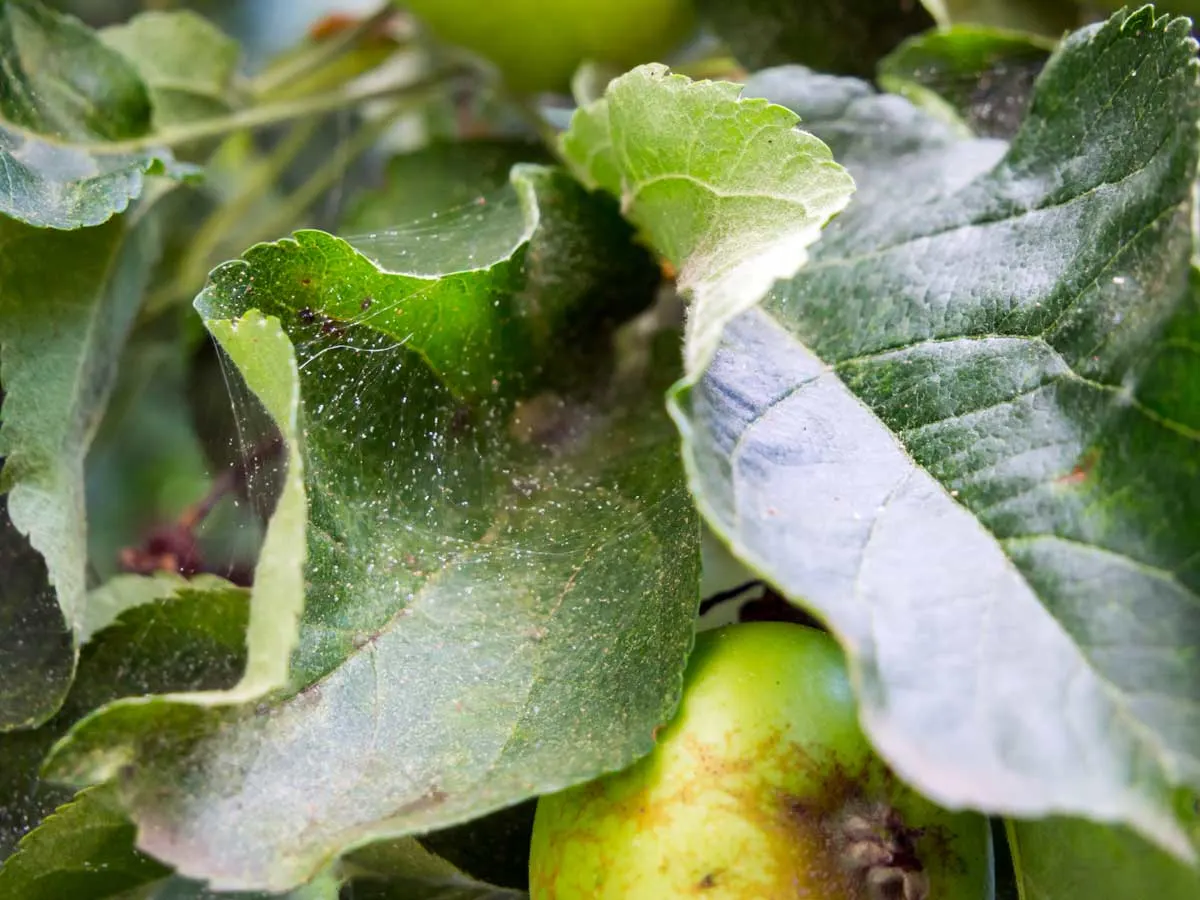
What are spider mites?
Spider mites are a type of arachnid, making them related to ticks and, you guessed it, spiders. However, they are technically a type of mite. They get the name “spider mite” due to the fact that they create spider-like silk webs on the leaves and stems of your plants.
The spider mite has four stages to its life cycle: egg, larva, two nymph cycles, and adult. Depending on the environment they are in, they can go from egg to adult in as little as 5 days. Therefore, it is very important to catch an infestation as quickly as possible. Similar to aphids, the problem can escalate fast.
Spider mites are quite small and come in a variety of different colors, making them a bit challenging to identify. The two-spotted spider mite is the size of a grain of sand! Spider mites feed off your pepper plants by poking tiny holes in the leaves and sucking out the contents.
Signs that you have spider mites on your pepper plants
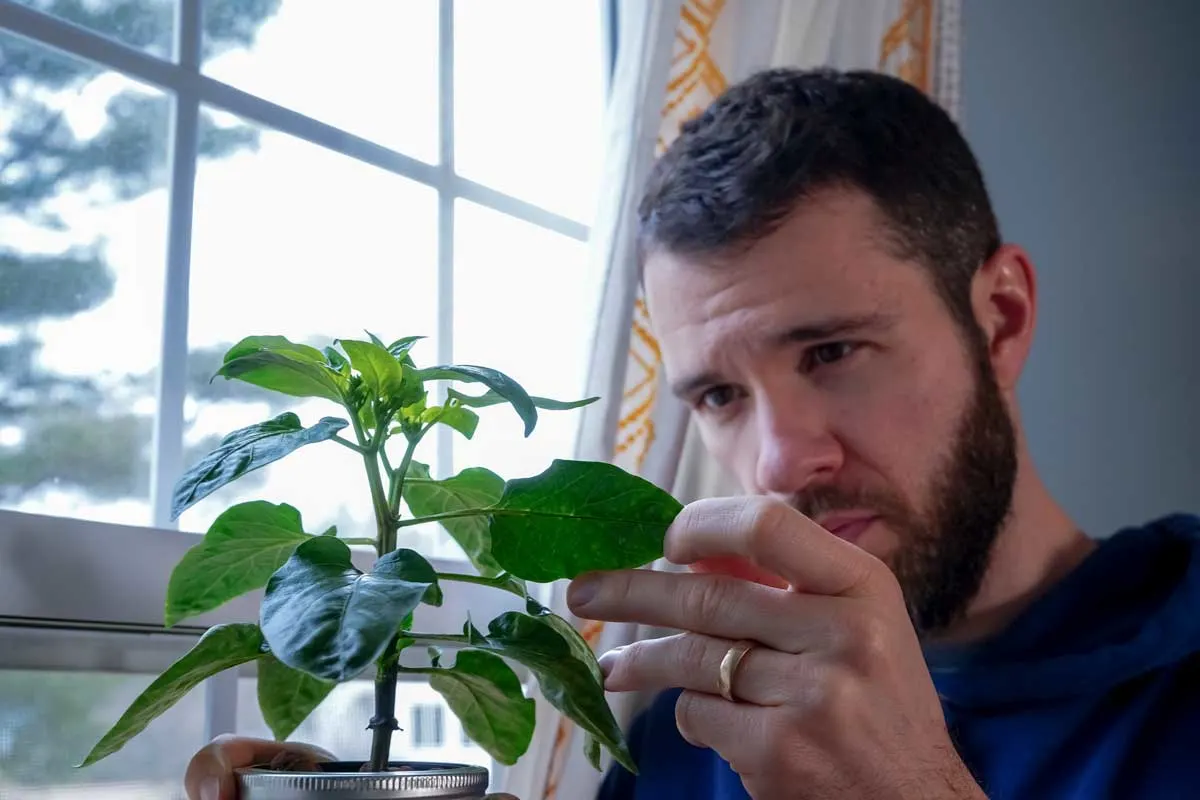
Spider mites are very small and difficult to see with the naked eye. If you have magnifying glass, you may have better luck spotting them. Even if you don’t see the spider mites themselves, there are others symptoms you can keep a look out for.
It’s important to note that spider mite damage typically starts in the lower growth of plants. They’re quite sneaky, aren’t they?
Symptoms of spider mites:
- Dusty/gritty feeling leaves – It’s normal to see a little dust on your pepper plants or houseplants. However, if the leaves feel unusually dusty or gritty, you may be feeling dead mites, fecal matter, or the shed-off exoskeletons. Gross, I know. Try holding a white piece of paper underneath your leaves and giving them a gentle shake to see what falls off.
- Small white or yellow feeding spots – Stippled leaves with lots of small yellow/white spots can indicate spider mite damage. Because they feed on your leaves by puncturing small holes, the leaf loses its pigment and this is the damage they will leave behind.
- Yellow leaves – Unfortunately, yellowing leaves is a common symptom of many pepper plant issues. However, spider mite damage will cause the leaves of your plants to turn yellow as well.
- Webbing – This is the easiest symptom of spider mites to identify. However, if you are seeing webbing on your pepper plants, your spider mite infestation is already quite severe. Ideally, you want to catch the infestation before it gets to this point.
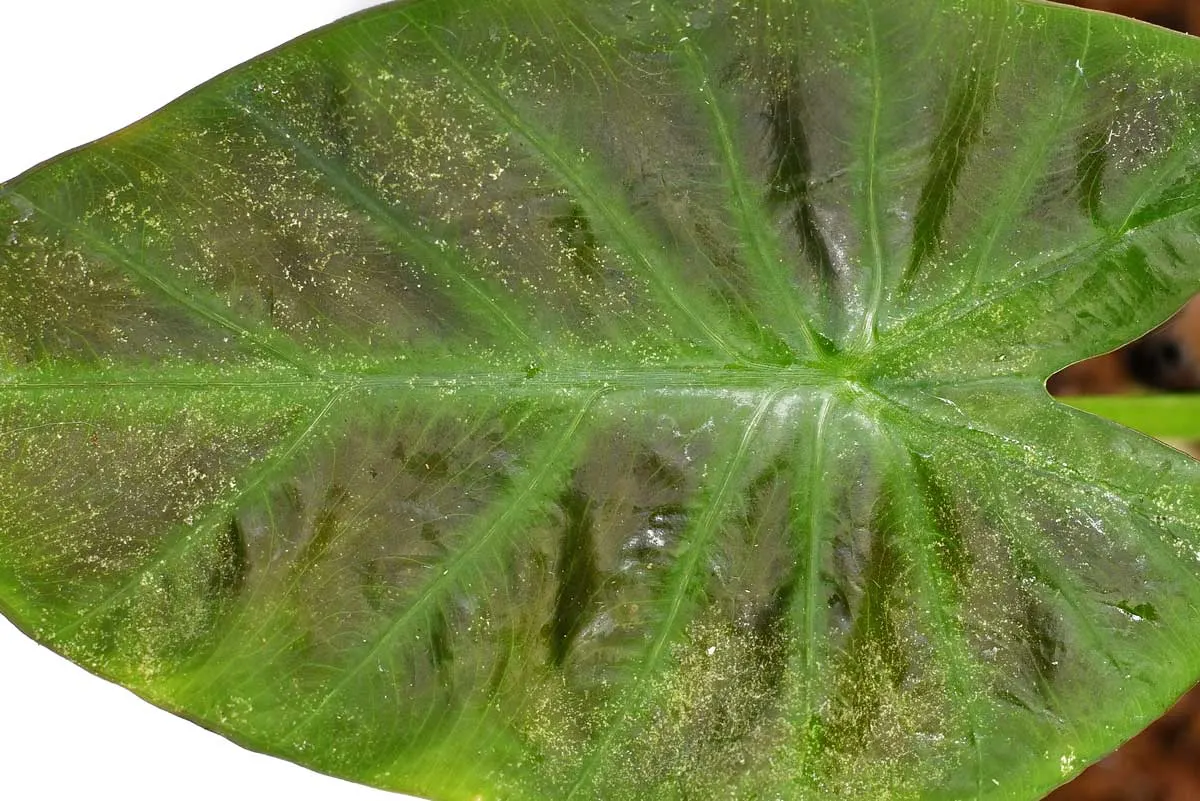
Preventing spider mites on your pepper plants
Spider mites prefer dry and hot conditions. They prefer high temperatures and low humidity as opposed to cold and/or wet conditions. Indoors, a spider mite infestation can pop up at any time of year. This is especially important if you are starting plants indoors.
Preventing spider mites:
- Predatory mites – This chemical-free option will help control populations without the use of pesticides outdoors.
- Monitor your plants frequently – If your pepper plant is still small, get into the habit of checking it on a regular basis by holding it up to the light. Inspect the leaves for any possible damage. As the plant grows indoors, stay on top of monitoring so you can catch issues before they get out of control. Any plants with suspected damage should be isolated and treated.
- Preventative sprays – You can use a plant spray like Lost Coast to treat your plants a couple times a month. This will help minimize the risk of a large infestation. There are also other sprays on the market, but always do a test on a single leaf before drenching your entire plant, and always let the product dry before placing it under grow lights.
Treating spider mites on your pepper plants
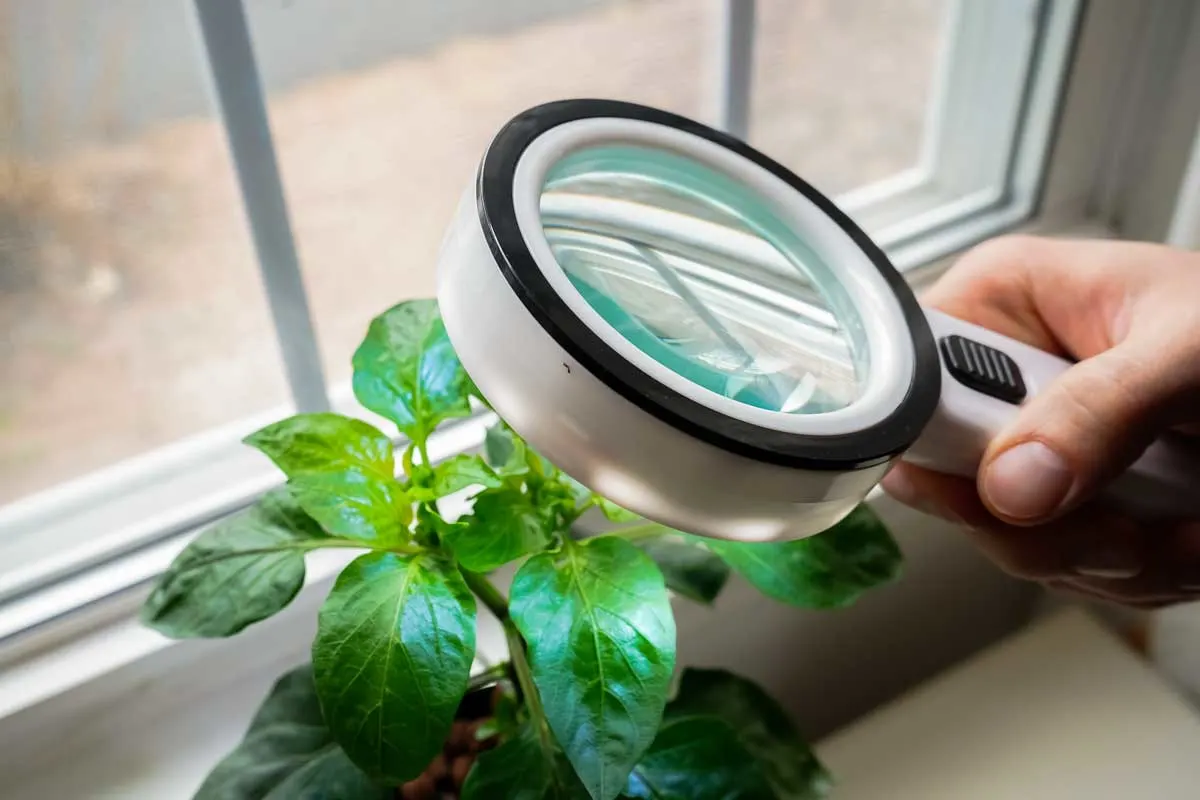
While being proactive and preventing spider mites in the first place is best, sometimes we find ourselves with an infestation and it needs to be treated. Be sure to treat every part of your pepper plant. Spider mites are great at hiding underneath leaves, as well as in small crevices.
- Remove infested leaves – If you are able to remove heavily infested leaves without completely stripping the plant (no more than 1/3 of the plant), remove the infested leaves and discard them (far away!).
- Give the plant a spray down – If your pepper plant is indoors, give the plant a good spray down in your shower to knock off as many mites as possible and clean the plant. If your plant is outside, a gentle spray with the hose will also work.
- Pest spray – There is no product that is a “one and done” solution. Pest sprays are designed to be applied for several weeks in order to disturb the entire life cycle of the pest. There are many pest spray options available, and the instructions will vary depending on which you choose. Spinosad/Captain Jack’s is also a good option.
- Clean the area – Be sure to thoroughly clean your grow tent or indoor space if your plants are inside.
- Discarding the plant – If you have a plant that is severely damaged, it may be safest to discard the plant in order to keep the rest of your plants healthy. This is especially true if you are unable to isolate the plant.
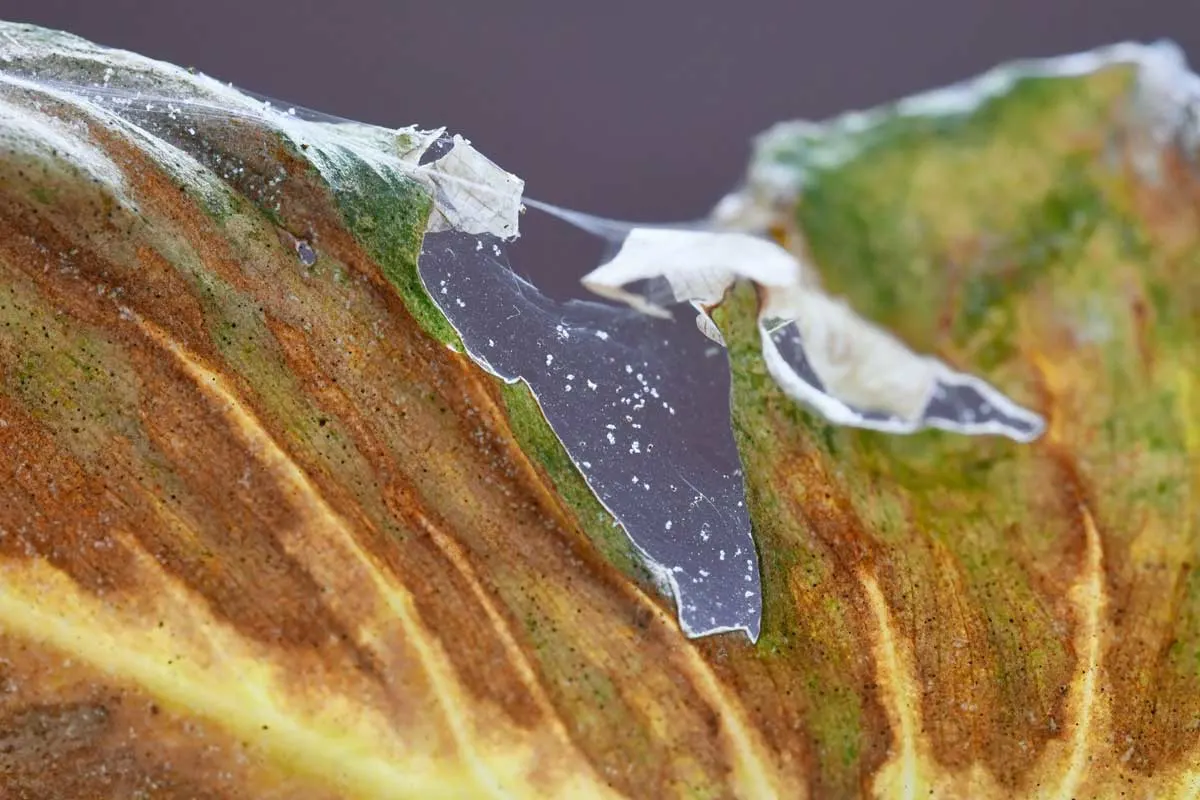
While it is more typical to see spider mites on your indoor houseplants, they can also take a liking to your pepper plants. This is especially true if you are growing them indoors like we do. Spider mites can come through small crevices, come in on your pets, and even on your clothing from when you are outside.
If you are dealing with them outdoors, a small spider mite problem may not be worth treating. Sometimes, the elements, as well as other beneficial insects, can help take care of the problem. Having a diverse garden that attracts a variety of insects is best – let nature do it’s thing.
Whenever you choose to use pesticides, be sure to research them thoroughly. If you are spraying a product that may be harmful to pollinators, do not do it when they are active. It’s important to preserve the natural ecosystem of your garden!

Crystalyn
Crystalyn loves spicy food and getting creative in the kitchen. When she isn’t finding new ways to use hot sauce, shes very busy watching cat videos on the internet.
